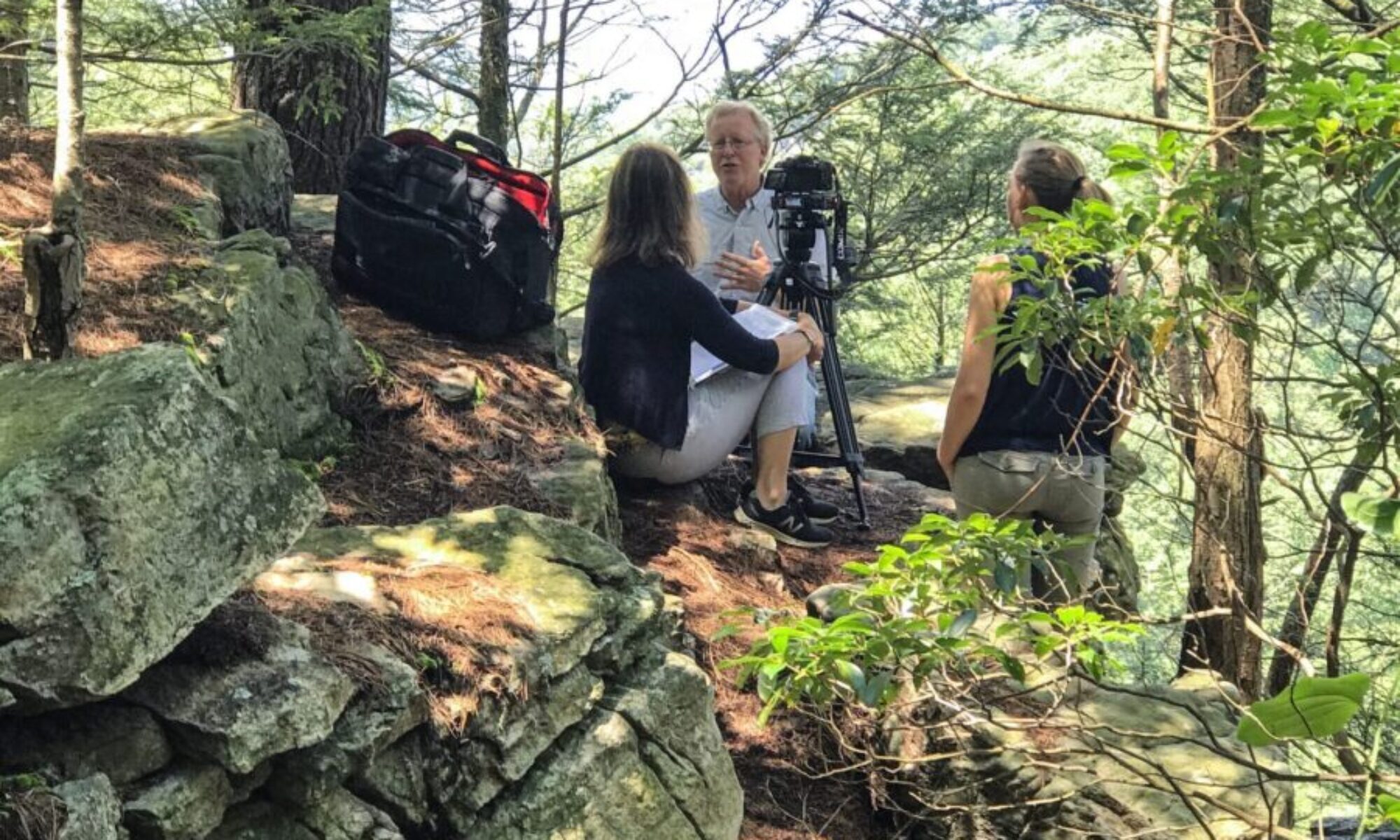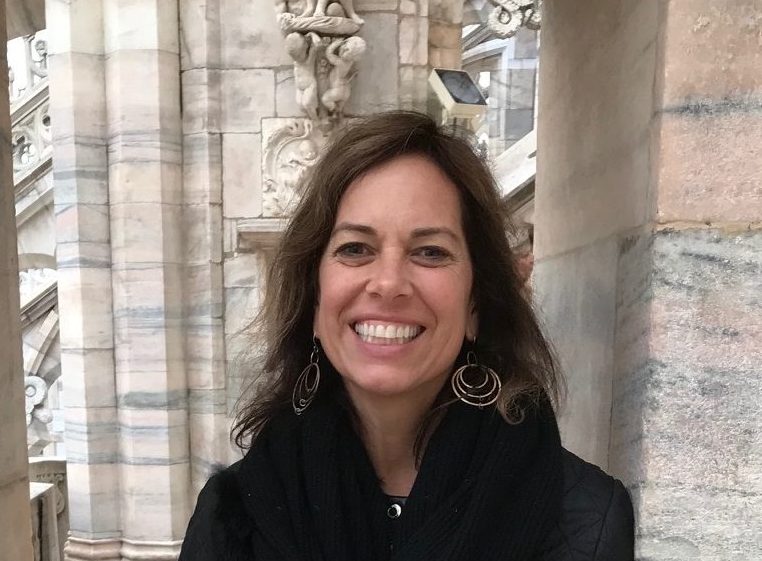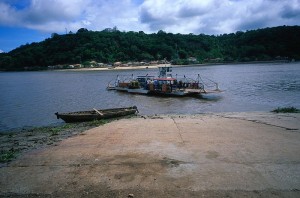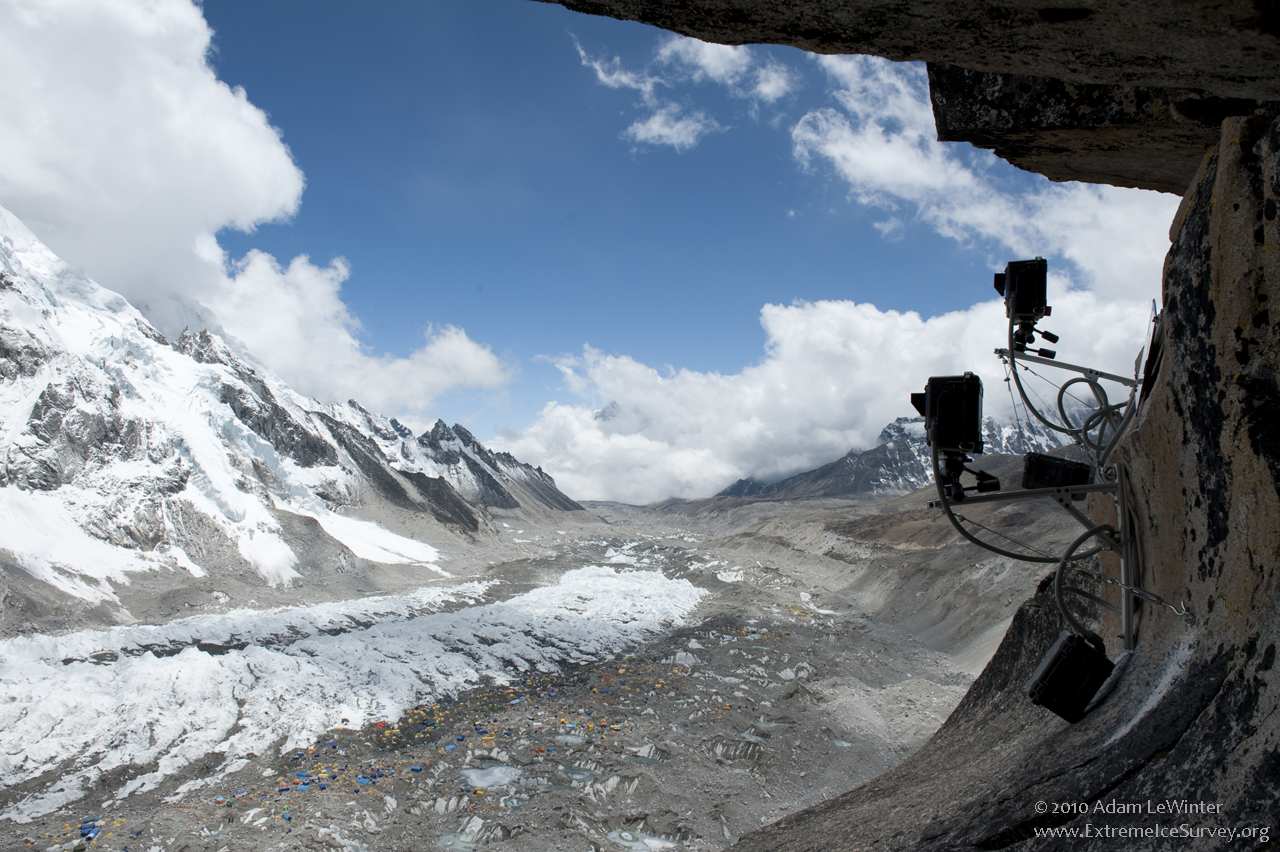Thought Matters Publishes Excerpt of Hot, Hungry Planet
Thought Matters, an idea exchange for the highly opinionated, published an excerpt of Hot, Hungry Planet recently.
Here’s how the chapter on California and Syria: A Tale of Two Droughts begins:
In the late spring of 2014, while covering food sustainability at the Monterey Bay Aquarium’s Sustainable Foods Institute, I took a trip to the Carmel Valley farm stand run by Earth-bound Farm. Earthbound Farm is the largest organic farming operation in the United States. It cultivates about 50,000 acres of produce, and I spent the morning walking in a small demonstration garden that was nothing short of paradise. Everything was a verdant green. Yet just beyond the farm, where the Carmel Mountains meet the horizon, was dry scrub and pale brown grass, a truer reflection of this parched land. The Golden State, which got its name from the grasses that turn a shade of palomino blond in summer, then green up again during the fall and spring rains, was looking more like the Brown State.
As California’s drought dragged into the next year, I couldn’t shake the sense of a crisis brewing in Carmel Valley. I was also hearing reports of conflict over water in war-torn Syria. I wondered, could water conflict on that scale ever occur here? I couldn’t blame Earthbound’s owners for choosing this idyllic spot, or other farmers for choosing any other location along California’s central coast, where morning fog moistens the otherwise dry landscape. When the founders of the farm first started growing raspberries on two and a half acres, they didn’t imagine it would expand to become America’s largest organic producer of salad greens and vegetables. But Earthbound’s growth was only one among the more recent in decades of farming expansion all across California, and especially the nearby Central Valley, since the Dust Bowl of the 1930s. Through the magic of irrigation, these farmers had made a desert bloom.
While Earthbound’s leafy expanse appeared intact, agriculture is in jeopardy throughout California and other western states. A 2015 investigation in ProPublica reported that California’s drought is part of a much bigger water cri-sis that is killing the Colorado River, “the victim of legally sanctioned overuse, the relentless forces of urban growth, willful ignorance among policymakers, and a misplaced confidence in human ingenuity.” Climate change will only exacerbate the problem.
Continue reading on Thought Matters and to buy your copy of Hot, Hungry Planet, please go here.
The New Republic Publishes My Latest Essay “One Meal A Day”
My latest essay, “One Meal A Day,” appears in the July issue of the New Republic.
Featuring photographs by Chris De Bode, One Meal A Day,” spotlights the hardships faced by refugees who have fled to Cameroon because of climate change and Boko Haram. Constant drought, combined with government limits on farming designed to deter insurgents, have led to mass starvation in the region. “These images do not ask us to look into their eyes and see ourselves,” I write. “They ask us to look at the emptiness of their bowls and reflect on the fullness of our own. We see their hunger through what little they have. We measure their suffering in the most universal unit of all: a single meal.”
For the complete story, please see the July issue of the New Republic.
Can Ecologists and Engineers Work Together to Harness Water For The Future?
The Pangani River in Tanzania is important for many reasons: its three major dams provide 17 percent of the country’s electricity; it sustains thousands of farmers and herders living in the basin; and its flow of fresh water supports humans, industry, and ecosystems. But most interesting might be the innovative water policies that govern withdrawals, infrastructure projects, and ecosystems along its banks.
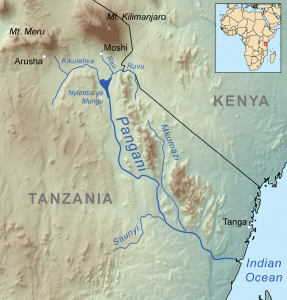 Climate change and population dynamics could cause trouble for the Pangani Basin and many others like it. More people are expected to depend on the flow of fresh water while at the same time rainfall and glacial meltwater from Mt. Meru, Mt. Pare, and Mt. Kilimanjaro are diminishing.
Climate change and population dynamics could cause trouble for the Pangani Basin and many others like it. More people are expected to depend on the flow of fresh water while at the same time rainfall and glacial meltwater from Mt. Meru, Mt. Pare, and Mt. Kilimanjaro are diminishing.
Around the world, water managers are adjusting to a similar quandary. Precipitation patterns and river flows are becoming more uncertain as the past is no longer a reliable guide for the future. Planners are adjusting to changes in the water cycle by integrating policies with flexible structures and ecosystems.
Flexibility Over Scale
In the November 2014 issue of Nature Climate Change, I wrote about how leaders in sustainable water management are finding common ground with two historically antagonistic approaches: engineering and ecology.
I talked with Mark Fletcher, a water engineer and the water business leader at UK-based Arup, a global company of consulting engineers with 14,000 employees. Modular is one way to describe his brand of sustainable water work.
“We had assumed that the world was static,” Fletcher told me. “We knew that the climate was predictable. Due to climate change or due to a changing climate, it is harder to predict things. So rather than build overly conservative monolithic solutions, we now design systems that can be tweaked and twiddled.”
A good example is osmosis desalination. “You literally stack desalination units, much like you would batteries, until you solve your problem,” he said.
From Fletcher’s perspective, the world has no need for more Hoover Dams, given the uncertainty around the global water cycle of the future. I write:
Fletcher favors natural solutions. In New York City, for example, new plans for city orchards and 9,000 grassed bio-swales, which resemble marshy depressions in the land, will slow the flow of storm water from sidewalks to water catchment basins. “Think of them as green sponges all over the city. The water gets soaked up and you avoid pumping every time it rains,” he says. “It’s the gift that keeps on giving.” Furthermore, rather than design water treatment plants that can accommodate extreme rainfall, he prefers multiple local responses that can be changed and adapted, much in the way that a Lego building block is removed and added.
Fletcher suggests that the solution to water management under climate change is beyond engineering. That’s why ecologists John Matthews, coordinator of the Alliance for Global Water Adaptation, and LeRoy Poff, a professor at Colorado State University, have been leading a team of 27 researchers at the U.S. National Socio-Environmental Synthesis Center in Maryland. The team includes economists, hydrologists, policymakers, and engineers. Climate change, they say, has prompted the researchers to work together on an integrated approach to freshwater adaptation. Rather than isolating water management issues within a single field, such as engineering or hydrology, the team’s multifaceted work is developing solutions for decision-makers. Think of their combined work as a chemical reaction. Instead of one element, such as engineering, working in seclusion on a freshwater adaptation project, their form of synthesis science means suddenly more ingredients are added to the beaker.
The research team that Matthews and Poff lead identifies markers of resilience of both infrastructure and ecosystems in basins. They are using the analysis so that ecological principles are incorporated into future water management projects from the very beginning.
Resilience markers include variation of flow, seasonal and temperature changes, and connections to flood plains, for instance. The specific indicators vary from river to river, but the principles remain the same.
Matthews says that the Dujiangyan system in China’s Sichuan Province is a model for integrating policies with engineering and ecology in a sustainable way. Built in 256 BC, the water diversion system still operates today.
According to Kathleen Dominique, an environmental economist at OECD, flexible approaches are necessary to adjust to changing conditions at low cost.
For the Pangani Basin, leaders have established ecosystems as a priority, keeping river flow available to wetlands, riparian forests, and mangroves, and the plan is to adjust water policies with the changing needs of communities. Similarly, the European Union’s water directive is now adjusted every six years to examine all changes and uses of rivers, not only those related to climate change.
For a deeper look at how people are working to become more resilient, improve water security, and preserve ecosystems by incorporating ecological principles into water management, read the complete article in Nature Climate Change.
Digging into climate change, students find more than science
To find the vanguard of climate education in the United States, keep an eye on four teachers in Maryland’s Wicomico County public school district.
Using field trips, editorial cartoons, even parent objections, they’re taking climate change far from the science classroom.
By Lisa Palmer
for the Daily Climate
BERLIN, Md. – Fifth grader Aman Shahzad looked closely at the level attached to the plumb line. “Lower, lower,” she called out. “OK! The bubble is in the middle.” Her classmate, holding the wooden surveyor’s pole, read the measurement: 14 centimeters.
The two students were from Pemberton Elementary School in nearby Salisbury, Md., the first to participate in a new, three-month interdisciplinary unit called “Investigating Climate Science” that spans science, math, economics and government. On this day in early spring on Maryland’s eastern shore, they were on a field trip to Assateague Island, measuring the slope of the beach as the first step in a lesson on sea-level rise.
The unit represents the vanguard of a nationwide effort, pushed by education and science groups, to broaden climate change education into a variety of physical and social science classes in public school curricula.
Yet even here, in one the most sophisticated climate change education units in the nation, teachers still feel the need to balance what the world’s scientific bodies know about climate change with what is represented in the public dialogue, avoiding terms like “global warming” and including a lesson questioning humanity’s impact on the problem.
Honing critical thinking
The three-month unit is designed for middle school and high-achieving elementary students. It was developed by four teachers in theWicomico County Public Schools’ gifted and talented program, with help from environmental educator Carrie Samis of the Maryland Coastal Bays Program. Lessons focus on climate science and hone critical thinking skills.
- In one lesson, students examined and analyzed editorial cartoons related to the proposed Keystone XL pipeline, and discussed the advantages and disadvantages of building a pipeline to ferry crude oil from Alberta’s tarsands to the United States.
- Another lesson examined the possible causes of changing climates, differentiating between anthropogenic and natural ones. Students studied greenhouse gases, climate indicators, and carbon footprints, then predicted positive and negative effects climate change may have on agriculture, the economy, infrastructure and wildlife.
 The full-day field trip to Assateague Island showed students how vulnerable the barrier island is to sea-level rise. They conducted a mock debate, acting as local stakeholders, on the impacts of salt marsh migration.
The full-day field trip to Assateague Island showed students how vulnerable the barrier island is to sea-level rise. They conducted a mock debate, acting as local stakeholders, on the impacts of salt marsh migration.- One lesson, called “the controversy,” probes “both sides of the story.” It examines uncertainties in historic data, fossil records, ice core samples and tree rings, posing the questions, “How do we know?” and “Where is the proof?”
- Several lessons are devoted to developing climate action plans and deciding what – if anything – students should do about climate change.
The diversified approach reaches and engages students via a number of different avenues. Gabe Dunn, a fifth grader at Westside Intermediate School, in Hebron, Md., liked the unit’s hands-on science and civics activities, especially debating the viability of land development amid marsh migration and sea-level rise. Cade Stone, a fifth grader at Pemberton Elementary, found the editorial cartoons appealing.
A need for ‘balance’
The unit has generated controversy.
Months before the lessons began, parents voiced concern over the contents and stressed a need for “balance.” Virtually every scientist studying atmospheric and earth sciences says climate change is real and that humans are the cause. But some parents sought inclusion of opposing theories, such as other causes and doubts that climate change is occurring.
In response, Nancy Rowe, one of four teachers developing the unit, devised lessons to show that climate change is not all caused by humans. “We want to be balanced,” Rowe said.
That desire of balance lead the program’s creators to avoid terms like “climate change” or “global warming” in lesson plans, Rowe said, “which would have sent a biased point of view.”
Scientists and educators who conduct workshops for teachers on climate change say this “false-balance” is not the correct approach.
“Human activities are the drivers of recent climate change,” said Susan Buhr, a climate scientist and director of the education and outreach program of the Cooperative Institute for Research in Environmental Science at the University of Colorado. “Teachers need to discern what is credible and not credible, and part of the job of teachers is to provide signposts to that end.”
‘Science has to lead’
Debate over the tradeoffs and values of how to respond to climate change is appropriate for environmental education, Buhr and other educators say. However, the strong evidence that supports the climate science and human causation of climate change doesn’t warrant equal weight with minority claims, often disputed by other research, that are not credible, they add. “Science has to lead,” Buhr said.
 Teachers drafting the program said criticism – or the desire to avoid it – influenced their decision to include alternate views. Parental opposition may have been small, said Samis, who helped write the climate curriculum for the Wicomico students. But it “has been at the forefront of my mind the whole time.”
Teachers drafting the program said criticism – or the desire to avoid it – influenced their decision to include alternate views. Parental opposition may have been small, said Samis, who helped write the climate curriculum for the Wicomico students. But it “has been at the forefront of my mind the whole time.”
After a local newspaper reported a front-page news story of the Wicomico County schools’ field trip to Assateague, readers accused the teachers of “brainwashing the kids with biased information” that climate change is occurring. “That hurt,” Rowe said. “We are really trying to expose them to both sides so that they can make their own decision about what to think.”
Lively lessons
Buhr disagrees with efforts that allow kids to make their own decisions about established scientific conclusions. “We don’t ask students in science class to make up their own minds over whether they believe in photosynthesis or if the earth is round,” she said. “Why would we be doing that here?”
– Nancy Rowe, teacher
Still, the teachers note that teaching the controversy has made for lively lessons in civics, politics and skeptical thinking – part of the goal of the whole unit. And the science is getting through.
The field trip was proof of that.
On this unseasonably warm March day, 160 students on a field trip from the Wicomico County gifted and talented program learned how climate change, sea level rise, and salt marsh migration will affect Maryland’s coastal areas. They also learned about economic, cultural, and social policies and decisions that local land owners, farmers, watermen, developers, and elected officials may have to make as the climate changes.
Science is really a process of discovery, of skepticism, of challenging long-held constructs, and controversy. By addressing parental concerns, discussing the different newspaper stories and linking student experiments to real-world situations, Rowe and her colleagues are, in effect, teaching the kids how to do science.
“We aren’t hiding anything,” Rowe said. “The kids love seeing both sides of a story.”
© Lisa Palmer 2012. All rights reserved.
Lisa Palmer is a freelance reporter in Maryland. Her work has appeared in Scientific American, Nature Climate Change, Fortune, and The Yale Forum, among other outlets. DailyClimate.org is a foundation-funded news service that covers climate change.
Photos of Wicomico County Public Schools students on a field trip to Assateague Island © Lisa Palmer.
This story was originally published by The Daily Climate.
Ice Flows: What do 28,000 time-lapse photos tell us about glaciers?
Colorado-based photographer-adventurer James Balog, of the Extreme Ice Survey, is working on a new series of time-lapse images of the ice and glaciers on Mount Everest. In my recent story for Slate, I obtained exclusive use of some of the earliest images from the project, including a video of the Khumbu Icefall, one of the most dramatic areas of glacial change over the past 50 years. The movement of glaciers is subtle to the human eye. But with time-lapse photography, Balog can compress nine months into 10 seconds and make glacial change patently visible.
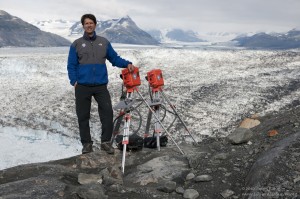 Glaciers move at, well, a glacial pace. But in recent decades, ice has been disappearing from the Arctic and mountain ranges at a shocking rate. Ice that formed over centuries is now melting in a matter of years or months, contributing to rising sea levels and profoundly altering hydrologic cycles and water supplies to regions that rely on glaciers for their water source. Still, the movement is so gradual that its scale is invisible to the casual observer. So how do you communicate the rapid melting of glaciers to nonscientists? Forget graphs, charts, and ice core measurements. Bring in time-lapse photography, a technique to compress a massive number of sequential photographs, taken at set intervals, into what looks like a sped-up video. James Balog, pictured to the right, is the founder and director of the Extreme Ice Survey, a spectacular set of time-lapse images chronicling glacial movement—the largest project of its kind. Here, Balog stands near Alaska’s Columbia Glacier, which moves at 50 feet per day, or eight times faster than it did 30 years ago.
Glaciers move at, well, a glacial pace. But in recent decades, ice has been disappearing from the Arctic and mountain ranges at a shocking rate. Ice that formed over centuries is now melting in a matter of years or months, contributing to rising sea levels and profoundly altering hydrologic cycles and water supplies to regions that rely on glaciers for their water source. Still, the movement is so gradual that its scale is invisible to the casual observer. So how do you communicate the rapid melting of glaciers to nonscientists? Forget graphs, charts, and ice core measurements. Bring in time-lapse photography, a technique to compress a massive number of sequential photographs, taken at set intervals, into what looks like a sped-up video. James Balog, pictured to the right, is the founder and director of the Extreme Ice Survey, a spectacular set of time-lapse images chronicling glacial movement—the largest project of its kind. Here, Balog stands near Alaska’s Columbia Glacier, which moves at 50 feet per day, or eight times faster than it did 30 years ago.
Click here to read my slide show essay in Slate on the Extreme Ice Survey.
(Photo courtesy of Extreme Ice Survey.)
Artists can scream. Scientists can’t.
Of all the ways the media has tried to communicate the need to adapt to the consequences of climate change, two points stand out. One is adequately addressing the nuances of science. The other is how to make climate change adaptation and mitigation issues tangible to the public. Now, artists have begun to address both. And, increasingly, they are getting their inspiration from scientists and researchers.
My Yale Forum article, “Artists can scream…Scientists can’t,” was recently featured at the Institute for Sustainable Communities’ Climate Leadership Academy on Adaptation Resilience. The event drew 16 teams from cities around the country to learn about promising practices in climate adaptation at the urban scale. The intensive peer-learning workshop focused on ways to engage citizens more effectively on adaptation. My Yale Forum article explains how scientists realize that pie charts and graphs don’t tell the whole climate change story.
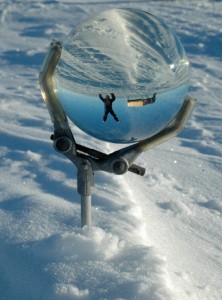
Last week at Boston University (my alma mater), scientists, filmmakers, artists, writers and cartoonists assembled to discuss the public perception of climate change, which is strongly influenced by the media and the arts. I’ve been writing about the public perception of climate change for over three years. I’m always looking for new examples of ways that visual media advances pubic understanding of climate change and its causes, and of the science-based solutions. If you see an art exhibit, cartoon, or film about climate change that’s based on science, share your ideas below. [That’s Simon Faithfull’s self-portrait in Antarctica, featured in “Ice Blink.”]
